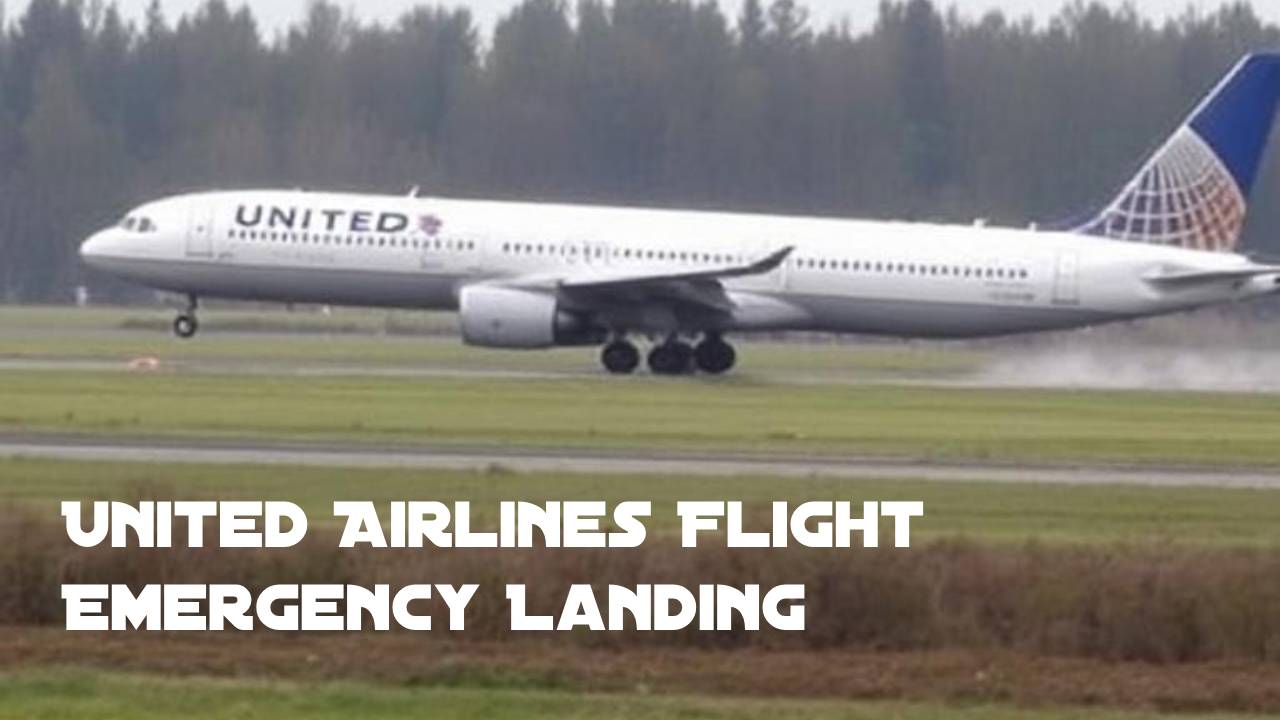Flying at 35,000 feet is supposed to be smooth—but what happens when it’s not? Recently, a United Airlines flight made an emergency landing after a sudden mid-air incident shocked passengers and crew. In moments like this, safety protocols are put to the ultimate test.
The fear and confusion experienced onboard quickly sparked questions: What caused the emergency? Was everyone safe? News like this can rattle even the most frequent fliers.
In this article, we’ll break down exactly what happened when the United Airlines Flight Emergency Landing, how the crew responded, and what it means for future flights. Whether you’re a traveler or aviation enthusiast, you’ll find the key facts and expert insights right here.
Timeline of the Incident
When a crisis unfolds mid-air, every second counts—and so does every decision made. The United Airlines Flight Emergency Landing didn’t happen in isolation. It followed a precise series of events, each critical in shaping the outcome. Understanding this timeline not only helps clarify what happened, but also highlights how prepared airlines are to respond under pressure.
So what led to the sudden diversion? Reports suggest that the issue began shortly after takeoff, when the crew noticed an unusual technical alert. Within minutes, communication with air traffic control was established, and an alternate airport was chosen for landing. Passengers were briefed, and emergency procedures were set in motion.
Eyewitness accounts, flight tracking data, and airline communications all help reconstruct the sequence from initial warning to touchdown. By walking through the timeline, we can better understand how the crew maintained control, what factors influenced the decision to land, and how quickly the airline mobilized resources.
Let’s break down exactly what happened, step by step, to give you a clear picture of how the emergency unfolded—from the first signs of trouble to the safe arrival on the ground.
What Causes of United Airlines Flight Emergency Landing?
Emergency landings are rare, but they’re never random. They are triggered by very specific, sometimes sudden, factors that put flight safety at risk. In the case of the recent United Airlines Flight Emergency Landing, initial reports point to technical malfunctions, though investigations are ongoing. But what actually prompts an aircraft to divert mid-flight?
There are several common reasons: mechanical issues, medical emergencies, severe turbulence, bird strikes, or even cabin depressurization. Pilots are trained to assess these situations quickly and choose the best course of action, often consulting with operations control and air traffic authorities.
It’s worth noting that an emergency landing doesn’t necessarily mean the aircraft was on the verge of crashing. In many cases, it’s a precautionary measure—designed to maximize safety, not to dramatize the moment. The decision is calculated, timely, and rooted in risk management.
By exploring the causes of emergency landings, we can demystify the process and understand how airlines prioritize passenger and crew welfare. Let’s take a closer look at the technical, environmental, and human factors that can lead a flight off its original route—and why these decisions are crucial for aviation safety.
Aviation Expert Commentary
Behind every in-flight emergency is a complex web of protocols, technologies, and human decision-making. To help make sense of the United Airlines Flight Emergency Landing, we turned to aviation experts for context. What went right? What raised concern? And how should the public interpret such incidents?
According to former pilots and safety analysts, emergency landings are a testament to how well aviation systems are designed. “The fact that the plane landed safely shows that both crew training and aircraft redundancy worked exactly as intended,” noted one commercial aviation consultant.
Experts emphasize that while passengers may feel panic, the crew operates within structured procedures. These protocols are refined over decades of aviation data and simulations. In this case, the swift response aligns with FAA best practices.
Several aviation insiders also stress that technical issues can often be addressed safely if identified early. The aircraft’s systems are built to detect malfunctions long before they escalate. So even though it may seem alarming to passengers, experts remind us that the system, in fact, worked.
Let’s explore what industry voices are saying about this incident—and how their insights can give us a balanced view of airline safety and real-time crisis handling.
How United Airlines Handled the Emergency
When a United Airlines Flight Emergency Landing occurs, the airline’s immediate response becomes critical—not just in the air but also on the ground. So how did United handle this incident? Based on eyewitness reports and initial media coverage, the airline followed standard emergency protocols with calm efficiency.
First and foremost, the flight crew responded decisively. After identifying the issue, they communicated clearly with passengers, maintained control, and coordinated a safe landing at the nearest suitable airport. This speaks volumes about their training and readiness.
On the ground, United activated its emergency response team. Ground staff were waiting at the runway, emergency vehicles were on standby, and medical personnel were alerted—standard operating procedure in such cases.
Passengers were swiftly deplaned and cared for, with many reporting clear instructions and professional handling. United also provided accommodations and rebookings as needed, minimizing the disruption for travelers.
Overall, the airline appears to have prioritized transparency, safety, and service. While an investigation will determine the technical causes, early signs show a well-managed response. Let’s break down the key actions United took during and after the emergency—and what they reveal about its crisis management protocols.
Public Relations and Company Statement
In the aftermath of the United Airlines Flight Emergency Landing, the airline’s communication strategy came under the spotlight. How a company responds publicly to such incidents can shape passenger trust and brand perception for years. So how did United Airlines approach it?
Shortly after the emergency landing, United issued an official statement confirming the incident, assuring public safety, and promising full cooperation with investigative authorities. The statement struck a careful balance between transparency and reassurance—a smart move in maintaining public confidence.
Beyond the press release, United engaged with media and customers via social platforms, answering queries and updating on rebooking efforts. Their tone was professional yet empathetic, acknowledging the stress passengers faced while reinforcing the steps taken to ensure safety.
Media outlets and aviation journalists took note of this rapid response. Industry analysts often say that clear, timely messaging is one of the best ways to handle aviation emergencies—and United’s response appears to align with this best practice.
Next, we’ll look at the exact language used in United’s statement, how it compares with previous responses from other carriers, and what it tells us about airline PR strategy during high-stakes moments.
Airline Safety – What Flyers Should Know
Every time a story like the United Airlines Flight Emergency Landing hits the news, flyers understandably ask: How safe is it to fly? The answer? Statistically speaking, air travel remains the safest mode of transportation—and incidents like these are rare exceptions in a well-oiled system.
Modern aircraft are designed with multiple layers of safety—from redundant systems to real-time diagnostics. Pilots undergo rigorous training, including simulation scenarios that mimic emergencies with incredible accuracy. And every commercial plane must pass strict maintenance checks before takeoff.
Still, passengers can take steps to feel safer and more prepared. Pay attention during safety briefings. Know where the exits are. Keep your seatbelt fastened when seated. And don’t hesitate to notify the crew if something feels off.
The key takeaway? Emergencies do happen, but when they do, there’s an entire ecosystem working to bring the aircraft down safely. Let’s explore what every flyer should know about airline safety, how you can stay informed, and why the aviation industry continues to have one of the best safety records worldwide.
Similar Emergency Landing Incidents in the Past
The recent United Airlines Flight Emergency Landing isn’t the first of its kind—and it likely won’t be the last. Emergency landings, while uncommon, have occurred throughout aviation history and often serve as case studies for future safety improvements.
From engine failures to medical emergencies, past incidents help highlight patterns, common triggers, and best practices. For example, the famous “Miracle on the Hudson” involved a bird strike and showcased textbook emergency piloting. Other cases involved pressurization issues, landing gear malfunctions, or cabin smoke—each leading to swift landings and valuable safety lessons.
Looking at these events side by side shows how aviation has evolved. What once may have ended in disaster is now often resolved safely thanks to technological advancements and improved crew training. Comparing these situations also puts today’s incident into perspective.
In the next section, we’ll look at a few high-profile emergency landings from recent years, what caused them, how they were handled, and what passengers and industry professionals learned from them.
Conclusion
The recent United Airlines Flight Emergency Landing reminds us that while air travel is incredibly safe, unexpected events can still occur. What matters most is how they’re handled—and in this case, the outcome speaks to the effectiveness of aviation training and safety systems.
For travelers, it’s normal to feel uneasy hearing about such incidents. But rest assured: pilots, crews, and airlines operate with safety as the top priority. Emergency protocols are in place, and they work.
As passengers, we can stay informed, stay alert, and continue to trust the systems that make modern aviation one of the safest forms of travel. Whether you’re a frequent flyer or planning your next trip, knowing what to expect—and how airlines respond—can make all the difference.
Safe travels, and may your journeys always be smooth—on the ground and in the air.
Emergency landings are rare. On average, they happen in less than 1 out of every 10,000 commercial flights. Most are precautionary rather than life-threatening.
Not necessarily. While they can be alarming, emergency landings are typically well-controlled and handled by highly trained pilots. The primary goal is safety, and most landings occur without injury.
Once the aircraft is safely on the ground, passengers are guided off the plane. They may be offered assistance, food, rebooking options, or hotel accommodations depending on the airline’s policy and location.
Compensation varies. Airlines may offer vouchers, refunds, or reimbursements depending on the cause and impact of the emergency. If the issue was due to mechanical failure, compensation is more likely.
The Federal Aviation Administration (FAA) reviews all emergency landings. This includes analyzing flight data, maintenance records, and crew reports to determine the cause and assess if further action is needed.










